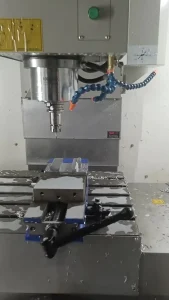Metal bending is a fundamental manufacturing process used in various industries. It involves reshaping metal materials to create desired angles and forms. This technique is crucial for producing a wide range of products, from automotive parts to architectural elements. In this article, we will explore the definition of metal bending, its methods, applications, and advantages.

Understanding Metal Bending
Metal bending refers to the process of deforming metal along a straight line. This deformation creates a bend, which alters the metal’s shape without breaking it. The process typically uses a combination of pressure and force to achieve the desired angle.
Different metals can be bent, including steel, aluminum, and copper. The choice of metal often depends on the specific application and required properties. For instance, aluminum is lightweight and corrosion-resistant, making it ideal for aerospace applications. On the other hand, steel is robust and durable, perfect for structural components.
Methods of Metal Bending
Several methods exist for bending metal, each with unique advantages. Here are the most common techniques:
1. Air Bending
Air bending is a popular technique that uses a punch and die to create a bend. The metal is placed on a die, and a punch applies pressure to form the bend. This method is versatile and can produce various angles. Moreover, air bending allows for adjustments during the process, making it ideal for quick changes.
2. Bottom Bending
In bottom bending, the metal is pressed against a die using a punch. This method provides more precise control over the bend angle compared to air bending. It is commonly used when high accuracy is required, such as in the production of automotive parts.
3. Roll Bending
Roll bending involves passing metal through a series of rollers to achieve a curve. This method is particularly effective for creating cylindrical shapes, such as pipes and tubes. Roll bending is efficient for producing large quantities of curved metal components.
4. Stretch Bending
Stretch bending combines bending and stretching to create complex shapes. This method is often used in the aerospace and automotive industries to produce lightweight and strong components. Stretch bending allows for intricate designs while maintaining the integrity of the material.
Applications of Metal Bending
Metal bending has a wide range of applications across various industries. Here are some key sectors that rely on this process:
1. Automotive Industry
In the automotive sector, metal bending is essential for manufacturing components such as frames, chassis, and exhaust systems. The ability to create lightweight parts improves fuel efficiency and vehicle performance.
2. Construction
The construction industry uses metal bending for structural elements, including beams, columns, and railings. Bent metal enhances the design and provides the necessary support for buildings.
3. Aerospace
Aerospace manufacturers utilize metal bending to create parts that must withstand high stress and weight restrictions. Bending techniques enable the production of critical components such as wing structures and fuselage sections.
4. Furniture Design
In furniture design, metal bending allows for innovative and modern shapes. Designers use bent metal to create stylish tables, chairs, and other furnishings that are both functional and aesthetically pleasing.
Advantages of Metal Bending
Metal bending offers several advantages that make it a preferred manufacturing process:
1. Precision
Bending techniques provide high levels of precision. This accuracy is crucial for ensuring that components fit together correctly in assemblies.
2. Versatility
Metal bending can be applied to a wide variety of materials and shapes. This versatility makes it suitable for numerous applications across different industries.
3. Cost-Effectiveness
Bending metal can be more cost-effective than alternative manufacturing methods. It often requires fewer materials and reduces waste, leading to lower production costs.
4. Strength
Bent metal components maintain their structural integrity, often enhancing strength compared to other fabrication methods. This quality is especially important in demanding applications, such as aerospace and construction.
Conclusion
In summary, metal bending is a vital process that shapes materials for various applications. Understanding the methods and benefits of metal bending can help manufacturers make informed decisions about their production processes. As industries continue to evolve, the demand for efficient and precise metal bending will grow, driving innovation and advancements in this essential field.






